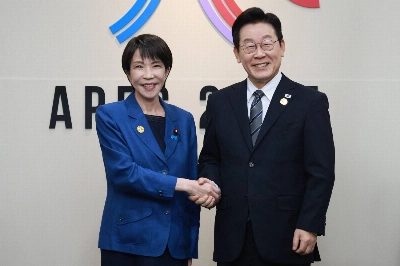Julian Opie's work is about signals. In his portraits, a pair of dots signals the eyes, a single line signals the mouth — his imagery is a distillation of reality that presents you only with the essential elements needed for your brain to fill in the rest.
In popular consciousness, he is best known for the album cover for U.K. Brit Pop band Blur's 2001 "Best of Blur" (2000). This came long after his rise to success in the art world, where, following graduation from Goldsmiths School of Art in 1982, he became one of the key figures in the New British Sculpture movement. Despite showing regularly in Europe and the United States, bar a couple of small solo shows at his Tokyo gallery SCAI The Bathhouse in 2000 and 2005, a current exhibition at Art Tower Mito in Ibaraki Prefecture is his first major solo exhibition in Asia, and showcases 90 recent works.
From the first room of the show, there is a sense that the exhibition has been constructed like a narrative, with chapters ahead that build up on what you already know. Opie begins by locating you in familiar territory, introducing you to his characters, from the demure profile of "Jack, printer. Profile right" (2007), dressed in a gray pinstripe suit against a brown background, to Opie's daughter in "Padmini, schoolgirl 2" (2007), clad in vivid red against a blue background. From here, the clear line of sight that runs through a straight line of galleries draws your eye to "Shahnoza dancing in bra and pants" (2007) — installed several rooms ahead — a life-size panel of yellow LEDs depicting a go-go dancer swaying seductively from side to side, beckoning you through the show.

















With your current subscription plan you can comment on stories. However, before writing your first comment, please create a display name in the Profile section of your subscriber account page.